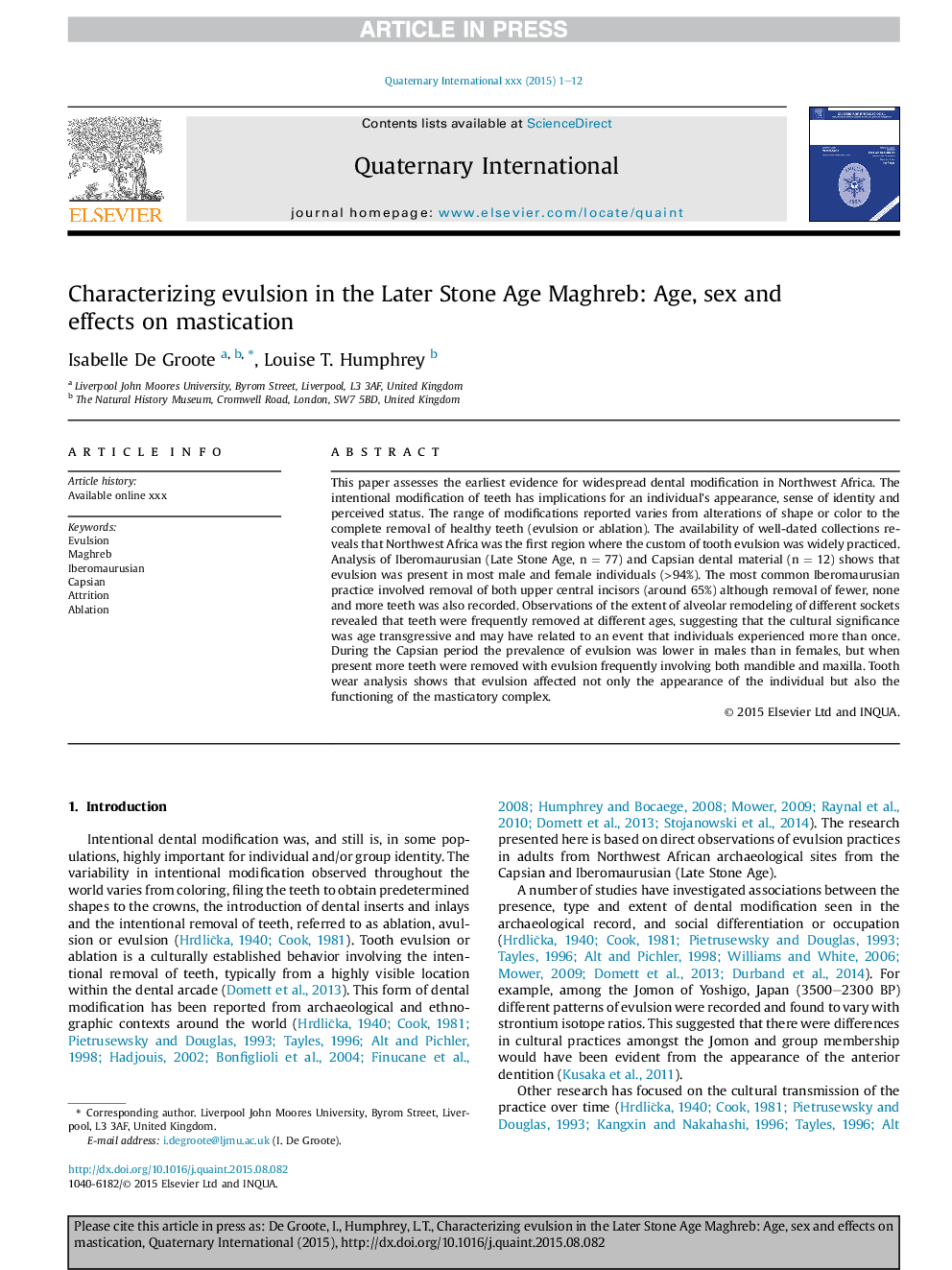| کد مقاله | کد نشریه | سال انتشار | مقاله انگلیسی | نسخه تمام متن |
|---|---|---|---|---|
| 5114218 | 1377973 | 2016 | 12 صفحه PDF | دانلود رایگان |
عنوان انگلیسی مقاله ISI
Characterizing evulsion in the Later Stone Age Maghreb: Age, sex and effects on mastication
ترجمه فارسی عنوان
تشخیص تکامل در عصر بعدا سنگ مغرب: سن، جنس و اثرات بر چسبیده شدن
دانلود مقاله + سفارش ترجمه
دانلود مقاله ISI انگلیسی
رایگان برای ایرانیان
موضوعات مرتبط
مهندسی و علوم پایه
علوم زمین و سیارات
زمین شناسی
چکیده انگلیسی
This paper assesses the earliest evidence for widespread dental modification in Northwest Africa. The intentional modification of teeth has implications for an individual's appearance, sense of identity and perceived status. The range of modifications reported varies from alterations of shape or color to the complete removal of healthy teeth (evulsion or ablation). The availability of well-dated collections reveals that Northwest Africa was the first region where the custom of tooth evulsion was widely practiced. Analysis of Iberomaurusian (Late Stone Age, n = 77) and Capsian dental material (n = 12) shows that evulsion was present in most male and female individuals (>94%). The most common Iberomaurusian practice involved removal of both upper central incisors (around 65%) although removal of fewer, none and more teeth was also recorded. Observations of the extent of alveolar remodeling of different sockets revealed that teeth were frequently removed at different ages, suggesting that the cultural significance was age transgressive and may have related to an event that individuals experienced more than once. During the Capsian period the prevalence of evulsion was lower in males than in females, but when present more teeth were removed with evulsion frequently involving both mandible and maxilla. Tooth wear analysis shows that evulsion affected not only the appearance of the individual but also the functioning of the masticatory complex.
ناشر
Database: Elsevier - ScienceDirect (ساینس دایرکت)
Journal: Quaternary International - Volume 413, Part A, 22 August 2016, Pages 50-61
Journal: Quaternary International - Volume 413, Part A, 22 August 2016, Pages 50-61
نویسندگان
Isabelle De Groote, Louise T. Humphrey,
